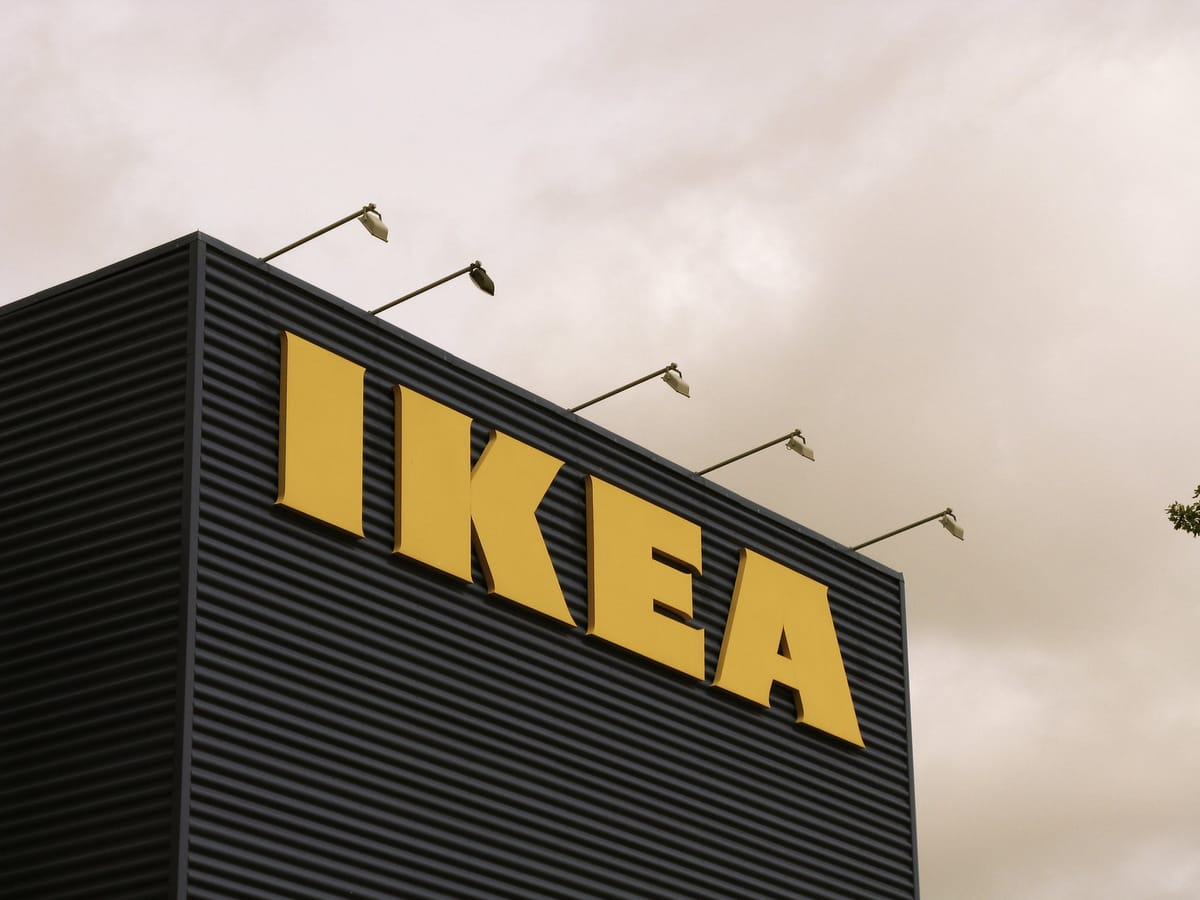In this article, I explain the strengths, weaknesses, opportunities, and threats — also known as a SWOT analysis — behind the furniture retailer, IKEA.
In this article, I explain the strengths, weaknesses, opportunities, and threats — also known as a SWOT analysis — behind the furniture retailer, IKEA.
IKEA is well-known around the world for being that Swedish company offering inexpensive products for your home. It’s a staple for people with lower income who still desire design, but at a lower cost. And although this is exactly how IKEA became such a popular worldwide brand, it’s also a problem.
But first, let’s get into why IKEA is one of the leading furniture companies worldwide.

IKEA Strengths
Market research
IKEA knows the ins-and-outs of their customers. If they didn’t, the company would have a hard time providing what their customers want. And what their customers want are a collection of affordable furniture and home appliances.
If IKEA didn’t know this is what their customers want, they wouldn’t be able to sell so many units. Nor would they bother to put in so much work into the development and design of their countless products.
Countless designs
IKEA designers create stylish, newly designed products. But it goes further than physical decorations. The products are developed for easy transport and assembly. In the store, you’re able to see the finished, assembled piece. But when you walk out, you’re given each item in bits and pieces because it’s easier to put in your car and take home.
Affordability
The inexpensiveness of IKEA products is the true strength of the brand. Maintaining that same level of cost-effectiveness is what keeps customers coming back for more.
The company searches for new ways to drive down costs, but without affecting the appearance of their products that consumers have come to expect.
A supplier’s dream
IKEA is able to buy bulk quantities of products because of a long lasting relationship with their suppliers. For IKEA, buying large quantities is cheaper than buying a few pieces at a time. It’s also great for suppliers. The suppliers don’t worry about large quantities of inventory taking up space in their warehouses. They know IKEA can take the inventory and sell it hundreds of millions of customers.
Brand recognition
IKEA is one of the most recognizable and well-known furniture brands worldwide. The brand has more than 600 million customers annually. And you can currently shop for IKEA products in more than 38 countries. Combine the brand recognition with the low-cost furniture options, and it’s no wonder IKEA is as popular or as well-known as it is.
IKEA Weaknesses
Bad press
IKEA has had a few run-ins with bad press. Employees have complained about poor treatment. The brand has faced ridicule for advertising techniques in non-western countries. And the worst offense: children being hurt or killed in relation to IKEA furniture. IKEA has also had to recall dangerous products because they’ve led to injuries.
Although the saying “any press is good press” may come into mind, in IKEA’s case, bad press leads to distrust from their customers.
Low quality
IKEA products are known for being lesser quality. This seems to be a byproduct of offering inexpensive products. How can it be affordable and high quality? IKEA has yet to find a solution.
On social media, you’ll likely find someone criticizing IKEA’s less than stellar product quality.
And because they can’t live up to greater quality expectations, other companies now have the opportunity. Whether these companies can provide both quality and cost-effective furniture and kitchen appliances is yet to be determined.
IKEA Opportunities
Few countries
IKEA is only in 38 countries. This is a relatively low number considering how well-known the company is. They can branch out further, especially since IKEA is barely featured in developing countries. Places like Malaysia, Mexico, and Brazil are just a few locations IKEA should consider moving into.
Online shopping
Additionally, you can purchase IKEA products through their website. Online shopping is becoming more popular as years go on. Especially around holidays like Black Friday, where people want to avoid long lines for fantastic sales.
IKEA is in a firm spot to accentuate their sales by offering more products online. Considering the company has more than 800 million online visitors, it’s definitely a sales channel IKEA should focus more efforts into.
Grocery stores
Did you know about IKEA’s food outlets? With the growing demand for healthy food options, IKEA can push its grocery businesses into grocery stores.
IKEA Threats
Fast competition
For instance, the competition for furniture products is growing. We’re seeing global brands like Walmart offering inexpensive home products. Although their catalogue isn’t as expansive as IKEA’s, that may only be a matter of time.
Possible lawsuits
Then there’s the bad press. Depending on the specifics, IKEA may be subject to lawsuits from consumers who were injured by IKEA products. In truth, it doesn’t even require a lawsuit to crush a business. All it takes is a mob of angry consumers on social media to create more bad buzz, bad reviews, and intense backlash. IKEA needs to be aware of how they’re viewed online to counteract this perception.
Increase in cash
Additionally, growing income can be a problem for the company too. As consumers have more excess cash, they’re less likely to buy cheap, low-quality products. Unfortunately, that’s the basis behind the IKEA brand. And since their quality is on the low-side, consumers will look for high quality, even if it costs a bit more.



